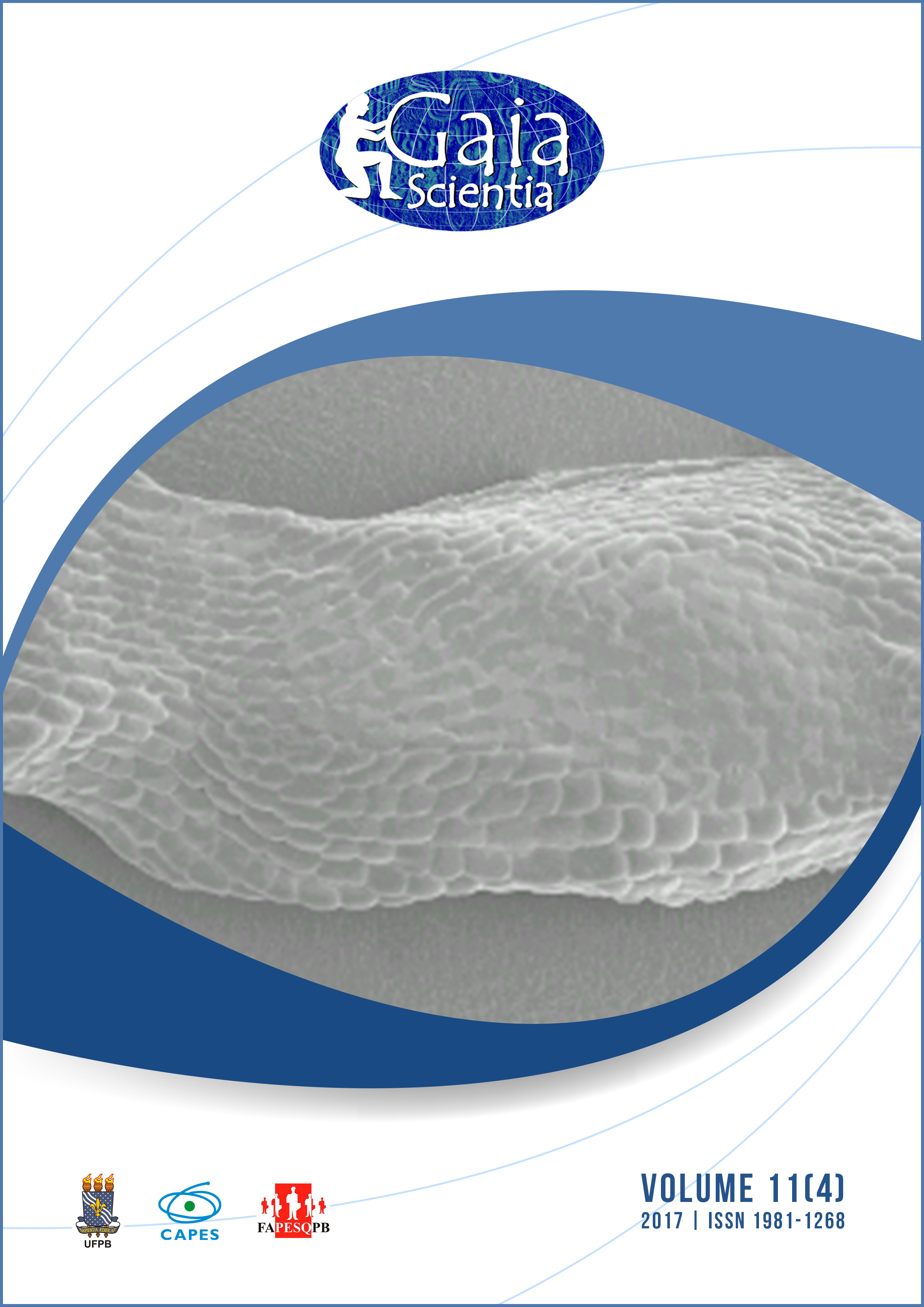Initial growth and compatible solutes concentration in seedlings of two genotypes of Psidium araca Raddi (Myrtaceae) in response to water suppression
DOI:
https://doi.org/10.22478/ufpb.1981-1268.2017v11n4.35469Resumo
The physiological characterization of plants is of great importance to the selection of suitable genotypes tolerant of low water availability. Therefore, the aim of this study was to evaluate the influence of water deficit on growth and compatible solutes concentration of two genotypes of Psidium araca Raddi seedlings. The IPA 10/2 and IPA 16/2 genotypes behaved similarly in terms of number of leaves, stem diameter and the increase of root formation over shoot formation under water deficit. IPA 10/2 produced higher total dry matter; however, IPA 16/2 accession produced higher root-shoot ratio, carbohydrates and free proline contents, conferring to IPA 16/2 a greater ability to grow and survive in environments subjected to low water availability.










